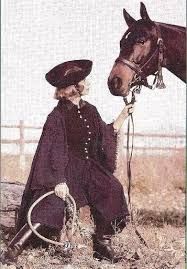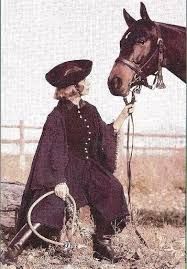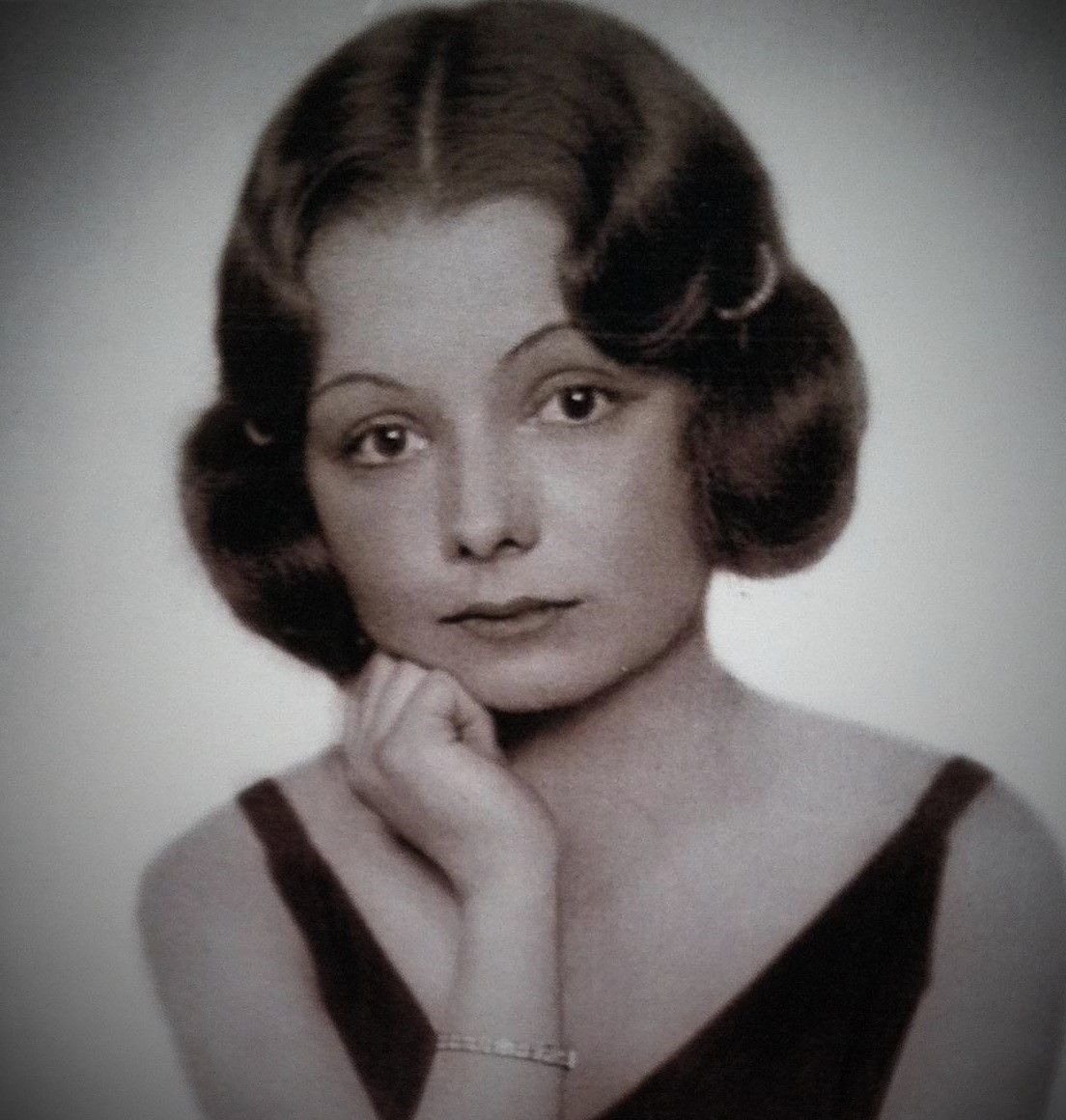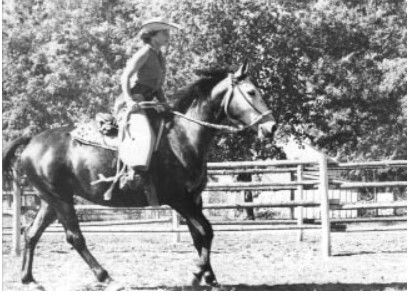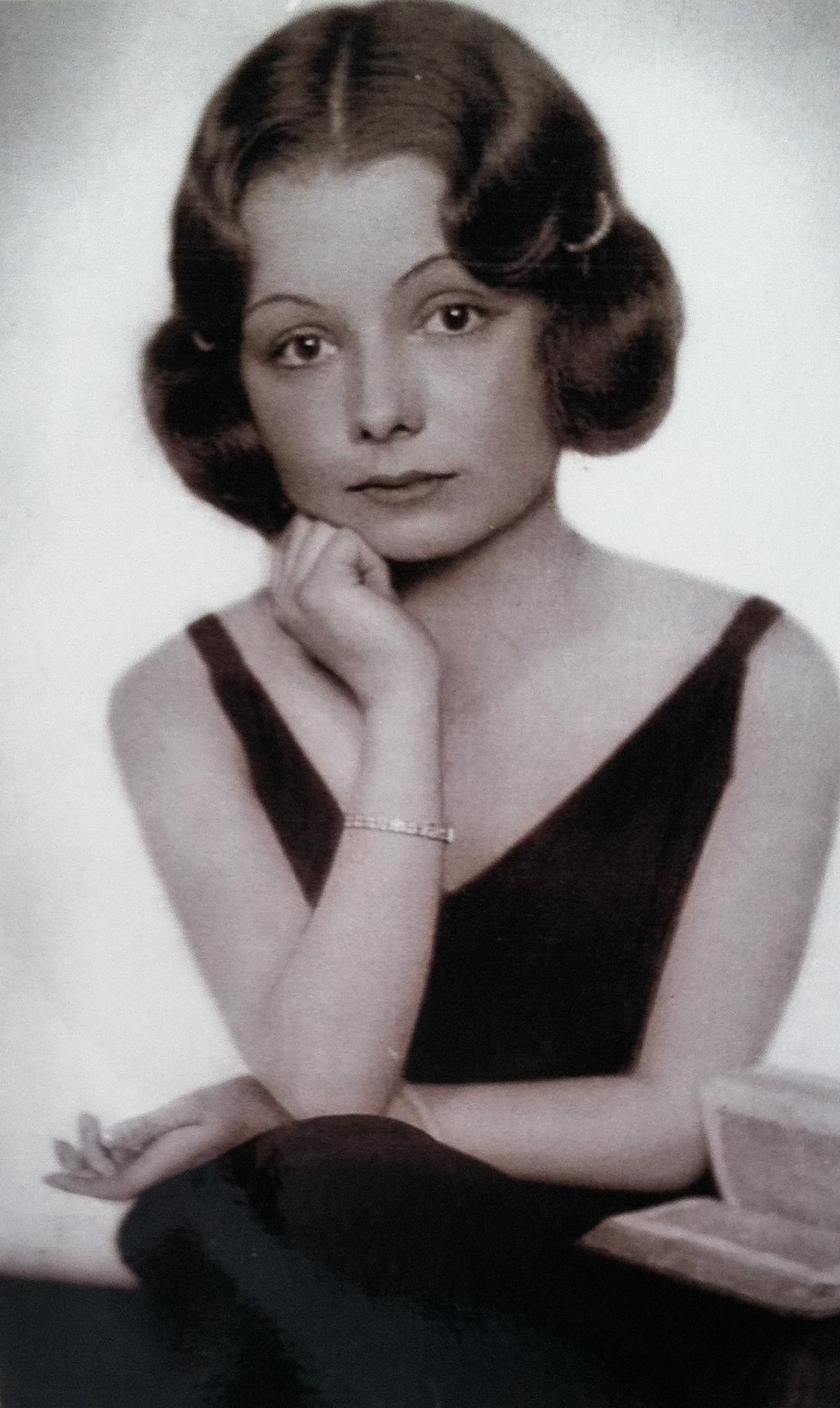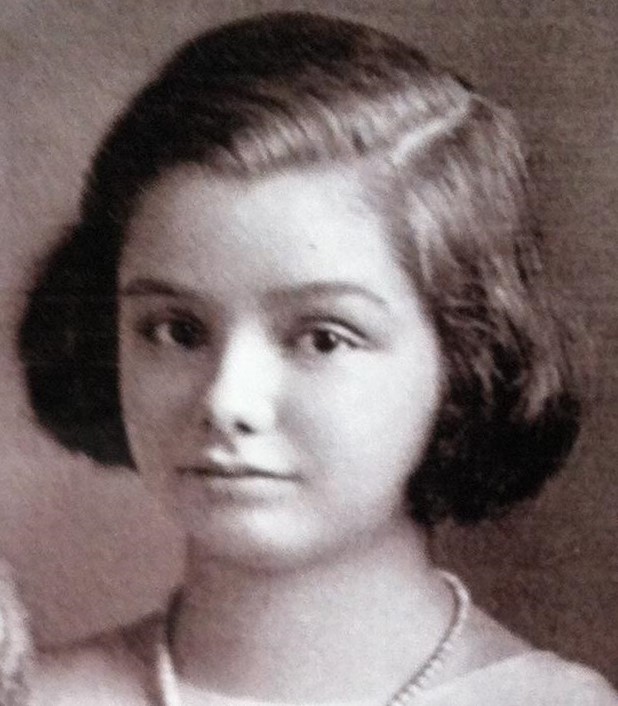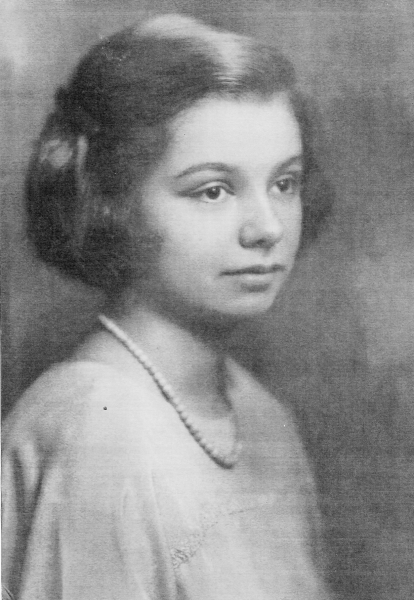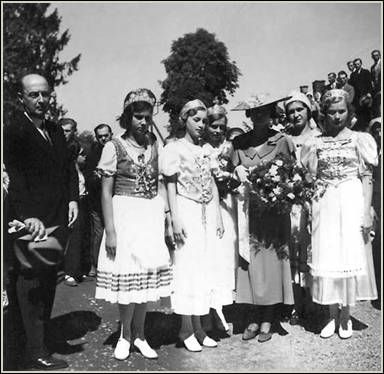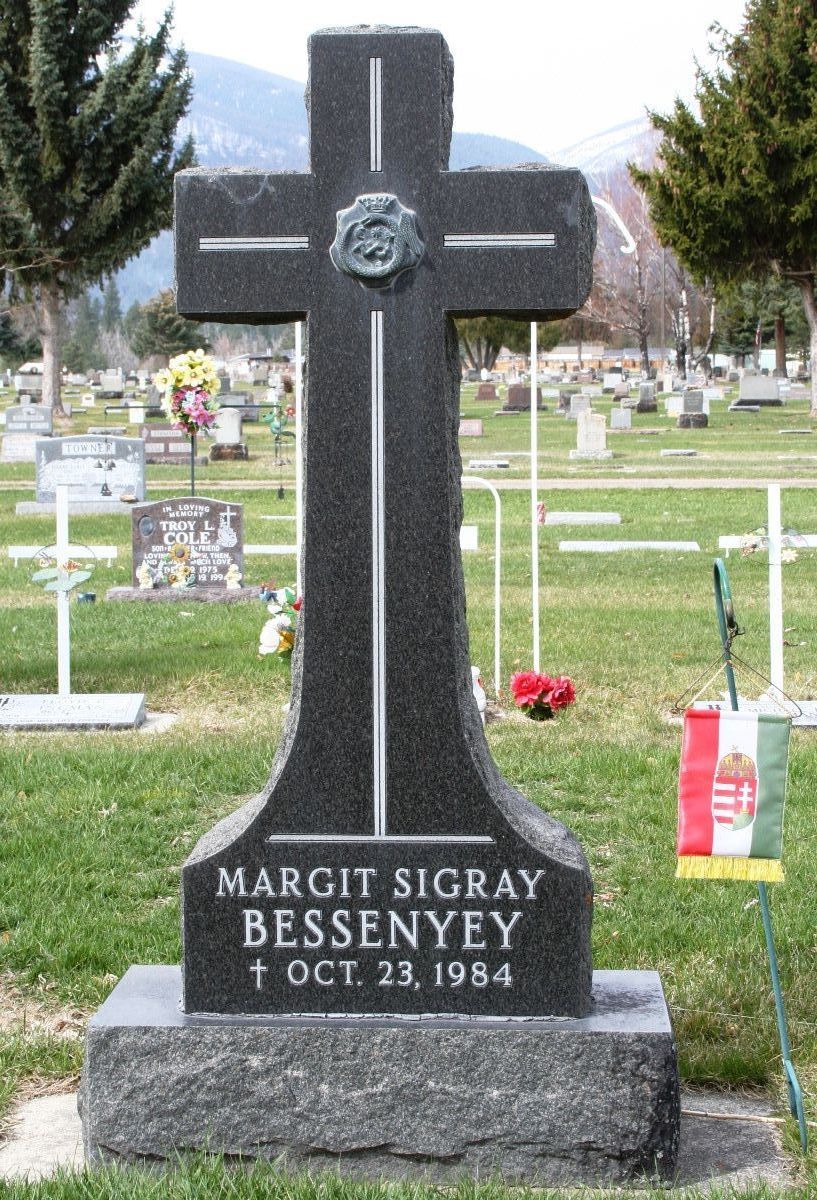Countess Margit Bessenyey and Brownie
IN MEMORY OF MARGIT
It is the greatest honor and privilege to be here at the Daly Mansion to remember COUNTESS MARGIT SIGRAY BESSENYEY. First of all, I wish to recognize Count Francis Bessenyey and to thank him greatly for making this event possible. Also, I would like to especially thank the wonderfully dedicated volunteers of the Marcus Daly Mansion. To be standing to the right of the Daly Mansion next to the Mansion pool is a most fitting setting for this talk.
It was in l954 that my eight-and-a-half--year-old brother Otto and I (then six years old) first came to this pool--invited by the gracious COUNTESS. Our first day at the Daly Mansion pool was bright and sunny. The weather was perfect, with blue skies and puffy white clouds and a cool soft breeze.
My mother, Countess Gabrielle Szirmay Szechenyi, and my brother Otto opened the small white gate, leading to the pool. My mother closed it securely and we entered the patio around the pool.
We placed our towels on the warm cement and tested the water. It was very inviting. Otto dove right in. Then I went in carefully--descending the ladder. The water was divine. It was crystal clear, very cold, and extremely well worth the descent from the ladder. We quickly got accustomed to swimming, diving, and playing with the water toys Margit had given us. She also gave us our first cowboy hats--which we were wearing when we entered the pool gate. They were red. We didn't want to leave the pool, but the weather was getting cooler and the sun was settling. We returned to the little guest house where we changed for dinner. My parents stayed at the larger guest house on Tammany Hill. My father, Count Ernest Szechenyi, who was the lucky and privileged employee of the Countess, met us before dinner at Tammany.Mrs. Unrue, a darling, kind, capable woman who baked absolutely the best bread I have ever eaten to this day, waited for Margit to arrive. The Countess arrived in a 1954 green Chevrolet. When Margit came, the adults conversed and drank scotch and sodas, while my brother and I had some of that great crystal cool water. I still remember what we ate for dinner: steak, scalloped potatoes, and peas. The steak was so huge that my mother had to cut it up before we could eat it. But, we would never begin eating until after the Countess had the first morsel. There was a beautiful western painting of horses on the dining room wall.
COUNTESS MARGIT BESSENYEY MUST BE REMEMBERED NOT ONLY AS THE COUNTESS OF THE BEAUTIFUL BITTERROOT VALLEY BUT AS THE ONLY QUEEN OF WESTERN MONTANA.
For my brother Otto and me, 1954 was a time of innocence. The Bitterroot Stock Farm seemed infinitely large to two young boys! Crossing the many clear, rapidly gushing creeks was remarkable. Seeing the noble, majestic Hungarian thoroughbreds was truly and positively unforgettable! There were also many, many Hereford cattle and sheep.
One day I can vividly remember going up Tammany Lane with my brother--perched two stories high on a hay wagon guided by a true, honest cowboy named Vernon Jenkins. Of, course Otto and I were wearing our red cowboy hats and were armed with our play-belt pistols. The view from the Tammany Hill guest house was spectacular! One could see Blodgett Canyon, and several times there were rainbows in the canyon area. The forested, granite Bitterroots to the west seemed high and mighty. To the right of the Countess's guest house facing west was the Fullerton House, which still exists today.
At this time I would like to ask Mrs. Theo Fullerton to stand up, and I want to personally thank her and her family for their graciousness and loving kindness to our family.There was a hole on the east side of Mrs. Fullerton's fence through which Otto, the dogs, and I could communicate with the Fullertons. We traversed this path many times on our way to a sandbox. There we were met by Mr. THEO FULLERTON who was in the United States Navy and served last in Okinawa, Japan. We were spoiled by the Fullertons as we played and had a great time with their sons, BUTCH, DOUG, NICK and DAVE. We had many friendly exchanges in and out of that sandbox. I also remember the great bath tubs in the guest house. They were formidable, to say the least! I heard my father say that they were his favorite bathtubs. In truth I had seen them earlier in Chester, NH at the house of descendants of the Vanderbilt family. So, I guess the Vanderbilts had been responsible for transplanting that style of tub to Montana.
Our family spent the entire summer in Hamilton and finally left from the local train station. Margit kindly took us down to the station in her l954 Chevy. I was so impressed by that car. The front window had a dividing horizontal bar. I was terribly proud to be tall enough to see through that windshield very well! The (to me) enormous blue-white Northern Pacific RR train stopped at the Hamilton Depot and my mother, Otto and I sadly said our temporary goodbyes.
Margit was the daughter of COUNT ANTHONY SIGRAY and HARRIET DALY. Harriet, or Hattie, was the daughter of MARCUS DALY. Margit, a direct heir to the Daly mansion and to the Bitterroot Stock Farm, bought out her relatives and became the sole owner. Margit escaped from Hungry at the end of World War II. Because her mother was an American, Margit was allowed to enter the USA soon after her escape. Some time later, she learned that the U. S. Cavalry was going to disband its horses-including the Hungarian ones captured in Europe. Margit arranged to buy eight lovely mares and this is how the Hungarian Horses wound up in Hamilton, Montana. Margit became an active and supportive member of the Hamilton community. She gave land to the humane society and organized the Bitterroot Trail Ride on the Bitterroot Stock Farm.
Margit knew me before I knew her. I say this because Margit played an integral part in my family's successful escape from Communist Hungary shortly before I was born. Margit had been my mother's best friend in their youthful years in Hungary. Like my father, Margit had always loved horses.
My father was the epitome of the equestrian, having grown up on horseback and having served as a Hungarian Hussar Officer. He was a member of the HONOR GUARD of Hungary's Regent, Admiral Horthy. Margit employed my father not only because of her long-time friendship with my parents but also because of his expertise with horses. I recall the day we drove up to one of the Hungarian horses on the hill in Chapman's Landing-Margit's farm on the Potomac--located in Maryland. To my greatest amazement, the horse stood at rigid attention until the Hungarian hymnus was finished being sung.
My father fought in the last cavalry charge on the Russian front, and was captured near the Don River in Ukraine, along with l0,000 other prisoners of whom only 100 were eventually released. They were transported back to a prison camp in Eastern Hungary. The family heard about his presence there and Irma, his sister, camouflaged as a peasant, went near the camp and saw him alive inside the fence. My mother made and sent him his favorite chocolate cake to let him know that she knew where he was. In answer to my Mother's and Otto's prayers, about a year later my father was finally released from the Communist political prison. After a difficult journey, he made it to Budapest for a very happy reunion with our family. Later my father was exuberant to know that my mother was expecting her second child -- me.
My parents were under constant surveillance by the AVO, the Hungarian Communist secret police. Knowing the serious danger of being imprisoned again, my parents decided on a plan to escape from the country. They staged an argument on the street in front of their apartment - for the benefit of the secret police--and went their separate ways.
My mother and little Otto left by a hired car while my father, faking tuberculosis and pulmonary coughing, took a train. Using fake papers, they were able to cross the border to Bratislava, Czechoslovakia from where they planned to make their clandestine entry into Austria. A hired guide led them towards the nearby border at night while being pursued by the secret police. Watchtowers and border guards were everywhere. They would shoot immediately if they detected anyone trying to cross that border. My parents' guide was shot in the back and killed-right in front of them.
On the other side of a very tall barbed-wire fence there was a huge, ferocious-looking German Shepherd dog. Had he barked, it could have meant the end for all of them. Our family prayed the Rosary, and then my father climbed over the fence. Instead of attacking him, the German Shepard quietly licked his feet.Then my father knew it would be safe for my mother and Otto to quickly follow him over the fence into Austria. I was in my mother's womb at that time and she later gave me the middle name of Gulliver, for Gulliver's Travels.
Our family sought refuge in a nunnery only to be surrounded and captured by Russian soldiers. You see, after WW II, Austria was divided into the American, British, French, and Russian zones. My mother was,understandably, desperate, when she found out that my father was scheduled to be returned to Communist Hungary, probably to face a death sentence by hanging.
Fortunately, she was able to contact the Americans in Vienna. CLAIBORNE PELL, a Senator from Rhode Island, worked for the C.I.C. (Central Intelligence Corps) there. He personally knew Countess Gladys Vanderbilt Szechenyi from Newport, RI. When he heard about my family, he entered the Russian zone to meet them. He soon returned with a case of champagne for the Russian guards. While the guards were all in a drunken stupor, Claiborne Pell helped my family escape to the American zone. Margit was the distant financial sponsor of that campaign-she was the one who had bought the champagne!
Our family found refuge in the house of distant relatives in Salzburg where I was born on May 21, 1948. An American Army doctor had warned my mother that either she, or the baby would probably not survive. A C-section saved both of our lives, but my mother later developed a systemic blood infection that affected her entire body. Word of this got to Margit here in Hamilton, and she immediately sent my mother some life-saving antibiotics. This was quite a feat, since antibiotics had just recently been introduced for medicinal use.
After a brief stay in Belgium, our family immigrated to the US. Margit eventually hired my father to help her take care of her horses. His expertise was very useful not only in handling the horses, but in training and riding them as well. He rode Margit's horses in competitions and won her a first prize in an obstacle course event in New Jersey. Later he was also in charge of several horses Margit kept on her estate in Maryland.
I will always remember Margit with immense respect, love, and gratitude. She saved my family's lives and the lives of the Hungarian horses. She was a true American. She believed in the sanctity of life and in Jeffersonian democracy. She detested Communism and all forms of totalitarianism, despotism, and slavery.
I cherish her memory as the tremendous supporter and benefactor of our family that she was during many years. As a true friend she is, indeed, unforgettable.
Thank you.
Source: The Hungarian Horse Association of America
Bessenyey died of an apparent heart attack in New York City.
Ravalli Republic, Oct 31, 1984
This photo was taken by Bryan Kercher.
Countess Margit Bessenyey and Brownie
IN MEMORY OF MARGIT
It is the greatest honor and privilege to be here at the Daly Mansion to remember COUNTESS MARGIT SIGRAY BESSENYEY. First of all, I wish to recognize Count Francis Bessenyey and to thank him greatly for making this event possible. Also, I would like to especially thank the wonderfully dedicated volunteers of the Marcus Daly Mansion. To be standing to the right of the Daly Mansion next to the Mansion pool is a most fitting setting for this talk.
It was in l954 that my eight-and-a-half--year-old brother Otto and I (then six years old) first came to this pool--invited by the gracious COUNTESS. Our first day at the Daly Mansion pool was bright and sunny. The weather was perfect, with blue skies and puffy white clouds and a cool soft breeze.
My mother, Countess Gabrielle Szirmay Szechenyi, and my brother Otto opened the small white gate, leading to the pool. My mother closed it securely and we entered the patio around the pool.
We placed our towels on the warm cement and tested the water. It was very inviting. Otto dove right in. Then I went in carefully--descending the ladder. The water was divine. It was crystal clear, very cold, and extremely well worth the descent from the ladder. We quickly got accustomed to swimming, diving, and playing with the water toys Margit had given us. She also gave us our first cowboy hats--which we were wearing when we entered the pool gate. They were red. We didn't want to leave the pool, but the weather was getting cooler and the sun was settling. We returned to the little guest house where we changed for dinner. My parents stayed at the larger guest house on Tammany Hill. My father, Count Ernest Szechenyi, who was the lucky and privileged employee of the Countess, met us before dinner at Tammany.Mrs. Unrue, a darling, kind, capable woman who baked absolutely the best bread I have ever eaten to this day, waited for Margit to arrive. The Countess arrived in a 1954 green Chevrolet. When Margit came, the adults conversed and drank scotch and sodas, while my brother and I had some of that great crystal cool water. I still remember what we ate for dinner: steak, scalloped potatoes, and peas. The steak was so huge that my mother had to cut it up before we could eat it. But, we would never begin eating until after the Countess had the first morsel. There was a beautiful western painting of horses on the dining room wall.
COUNTESS MARGIT BESSENYEY MUST BE REMEMBERED NOT ONLY AS THE COUNTESS OF THE BEAUTIFUL BITTERROOT VALLEY BUT AS THE ONLY QUEEN OF WESTERN MONTANA.
For my brother Otto and me, 1954 was a time of innocence. The Bitterroot Stock Farm seemed infinitely large to two young boys! Crossing the many clear, rapidly gushing creeks was remarkable. Seeing the noble, majestic Hungarian thoroughbreds was truly and positively unforgettable! There were also many, many Hereford cattle and sheep.
One day I can vividly remember going up Tammany Lane with my brother--perched two stories high on a hay wagon guided by a true, honest cowboy named Vernon Jenkins. Of, course Otto and I were wearing our red cowboy hats and were armed with our play-belt pistols. The view from the Tammany Hill guest house was spectacular! One could see Blodgett Canyon, and several times there were rainbows in the canyon area. The forested, granite Bitterroots to the west seemed high and mighty. To the right of the Countess's guest house facing west was the Fullerton House, which still exists today.
At this time I would like to ask Mrs. Theo Fullerton to stand up, and I want to personally thank her and her family for their graciousness and loving kindness to our family.There was a hole on the east side of Mrs. Fullerton's fence through which Otto, the dogs, and I could communicate with the Fullertons. We traversed this path many times on our way to a sandbox. There we were met by Mr. THEO FULLERTON who was in the United States Navy and served last in Okinawa, Japan. We were spoiled by the Fullertons as we played and had a great time with their sons, BUTCH, DOUG, NICK and DAVE. We had many friendly exchanges in and out of that sandbox. I also remember the great bath tubs in the guest house. They were formidable, to say the least! I heard my father say that they were his favorite bathtubs. In truth I had seen them earlier in Chester, NH at the house of descendants of the Vanderbilt family. So, I guess the Vanderbilts had been responsible for transplanting that style of tub to Montana.
Our family spent the entire summer in Hamilton and finally left from the local train station. Margit kindly took us down to the station in her l954 Chevy. I was so impressed by that car. The front window had a dividing horizontal bar. I was terribly proud to be tall enough to see through that windshield very well! The (to me) enormous blue-white Northern Pacific RR train stopped at the Hamilton Depot and my mother, Otto and I sadly said our temporary goodbyes.
Margit was the daughter of COUNT ANTHONY SIGRAY and HARRIET DALY. Harriet, or Hattie, was the daughter of MARCUS DALY. Margit, a direct heir to the Daly mansion and to the Bitterroot Stock Farm, bought out her relatives and became the sole owner. Margit escaped from Hungry at the end of World War II. Because her mother was an American, Margit was allowed to enter the USA soon after her escape. Some time later, she learned that the U. S. Cavalry was going to disband its horses-including the Hungarian ones captured in Europe. Margit arranged to buy eight lovely mares and this is how the Hungarian Horses wound up in Hamilton, Montana. Margit became an active and supportive member of the Hamilton community. She gave land to the humane society and organized the Bitterroot Trail Ride on the Bitterroot Stock Farm.
Margit knew me before I knew her. I say this because Margit played an integral part in my family's successful escape from Communist Hungary shortly before I was born. Margit had been my mother's best friend in their youthful years in Hungary. Like my father, Margit had always loved horses.
My father was the epitome of the equestrian, having grown up on horseback and having served as a Hungarian Hussar Officer. He was a member of the HONOR GUARD of Hungary's Regent, Admiral Horthy. Margit employed my father not only because of her long-time friendship with my parents but also because of his expertise with horses. I recall the day we drove up to one of the Hungarian horses on the hill in Chapman's Landing-Margit's farm on the Potomac--located in Maryland. To my greatest amazement, the horse stood at rigid attention until the Hungarian hymnus was finished being sung.
My father fought in the last cavalry charge on the Russian front, and was captured near the Don River in Ukraine, along with l0,000 other prisoners of whom only 100 were eventually released. They were transported back to a prison camp in Eastern Hungary. The family heard about his presence there and Irma, his sister, camouflaged as a peasant, went near the camp and saw him alive inside the fence. My mother made and sent him his favorite chocolate cake to let him know that she knew where he was. In answer to my Mother's and Otto's prayers, about a year later my father was finally released from the Communist political prison. After a difficult journey, he made it to Budapest for a very happy reunion with our family. Later my father was exuberant to know that my mother was expecting her second child -- me.
My parents were under constant surveillance by the AVO, the Hungarian Communist secret police. Knowing the serious danger of being imprisoned again, my parents decided on a plan to escape from the country. They staged an argument on the street in front of their apartment - for the benefit of the secret police--and went their separate ways.
My mother and little Otto left by a hired car while my father, faking tuberculosis and pulmonary coughing, took a train. Using fake papers, they were able to cross the border to Bratislava, Czechoslovakia from where they planned to make their clandestine entry into Austria. A hired guide led them towards the nearby border at night while being pursued by the secret police. Watchtowers and border guards were everywhere. They would shoot immediately if they detected anyone trying to cross that border. My parents' guide was shot in the back and killed-right in front of them.
On the other side of a very tall barbed-wire fence there was a huge, ferocious-looking German Shepherd dog. Had he barked, it could have meant the end for all of them. Our family prayed the Rosary, and then my father climbed over the fence. Instead of attacking him, the German Shepard quietly licked his feet.Then my father knew it would be safe for my mother and Otto to quickly follow him over the fence into Austria. I was in my mother's womb at that time and she later gave me the middle name of Gulliver, for Gulliver's Travels.
Our family sought refuge in a nunnery only to be surrounded and captured by Russian soldiers. You see, after WW II, Austria was divided into the American, British, French, and Russian zones. My mother was,understandably, desperate, when she found out that my father was scheduled to be returned to Communist Hungary, probably to face a death sentence by hanging.
Fortunately, she was able to contact the Americans in Vienna. CLAIBORNE PELL, a Senator from Rhode Island, worked for the C.I.C. (Central Intelligence Corps) there. He personally knew Countess Gladys Vanderbilt Szechenyi from Newport, RI. When he heard about my family, he entered the Russian zone to meet them. He soon returned with a case of champagne for the Russian guards. While the guards were all in a drunken stupor, Claiborne Pell helped my family escape to the American zone. Margit was the distant financial sponsor of that campaign-she was the one who had bought the champagne!
Our family found refuge in the house of distant relatives in Salzburg where I was born on May 21, 1948. An American Army doctor had warned my mother that either she, or the baby would probably not survive. A C-section saved both of our lives, but my mother later developed a systemic blood infection that affected her entire body. Word of this got to Margit here in Hamilton, and she immediately sent my mother some life-saving antibiotics. This was quite a feat, since antibiotics had just recently been introduced for medicinal use.
After a brief stay in Belgium, our family immigrated to the US. Margit eventually hired my father to help her take care of her horses. His expertise was very useful not only in handling the horses, but in training and riding them as well. He rode Margit's horses in competitions and won her a first prize in an obstacle course event in New Jersey. Later he was also in charge of several horses Margit kept on her estate in Maryland.
I will always remember Margit with immense respect, love, and gratitude. She saved my family's lives and the lives of the Hungarian horses. She was a true American. She believed in the sanctity of life and in Jeffersonian democracy. She detested Communism and all forms of totalitarianism, despotism, and slavery.
I cherish her memory as the tremendous supporter and benefactor of our family that she was during many years. As a true friend she is, indeed, unforgettable.
Thank you.
Source: The Hungarian Horse Association of America
Bessenyey died of an apparent heart attack in New York City.
Ravalli Republic, Oct 31, 1984
This photo was taken by Bryan Kercher.
